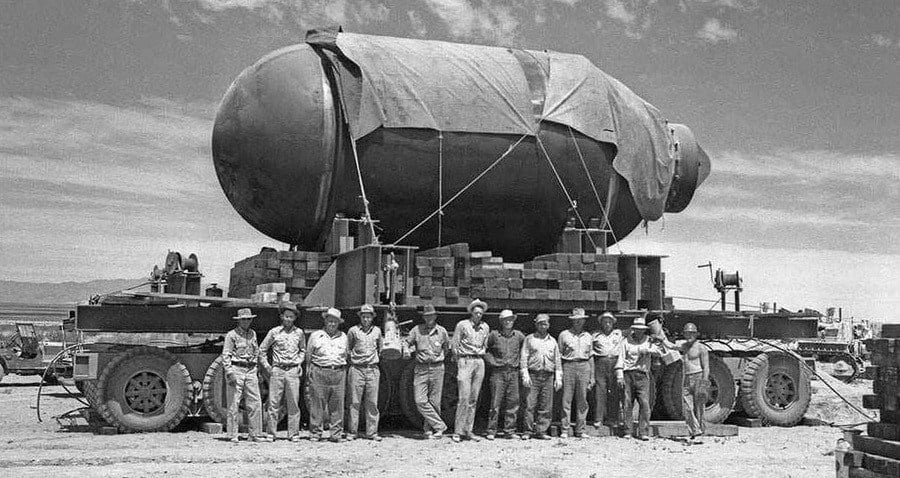

“Lieutenant, we found the arm/safe switch,” he told Jack.
“Great,” Jack said.
“Not great,” the sergeant replied. “It’s on arm.”
Today's selection -- from Capital and Imperialism: Theory, History, and the Present by Utsa Patnaik and Prabhat Patnaik. Britain’s John Maynard Keynes, famous for his theories on government deficit spending, used Britain’s control of India to help pay for the Second World War, and in the process brought famine and death to millions in India:
"As we have seen, the mechanism of the drain of wealth up to the Depression turned on Britain's appropriating every year India's entire global external earnings of gold and sterling from commodity export surplus, while using rupee budgetary revenues to recompense the producers for their net exports. The appropriation took place against regular administered invisible demands on India that were detailed both in sterling on India's external account and in rupees in the budget under 'expenditure abroad.' The total of these invisible demands, however, included non-recurring items as well, and thereby the total was always pitched higher than India's external earnings over a run of years, no matter how fast the latter might grow, so that the current account was kept in deficit. As India's external earnings declined sharply during the Depression, Britain's invisible demands, far from declining, rose further as it sought to moderate its own crisis at the colonies' expense. This produced exceptionally enlarged current account deficits for India from 1925-26 to 1938-39, and these forced substantial and unprecedented outflows of financial gold to Britain, in addition to India's incurring fresh debt to finance them.
"The war years saw enhanced levels of extracting resources from India, but through an entirely different mechanism, that of a 'profit inflation,' whose theoretical and practical meanings we explore in this chapter. While it was taking India's global foreign exchange earnings, which had always been the object over the entire period of colonial rule, two factors now produced an altered situation. First, these earnings had declined with no prospect of recovering to earlier heights in a changed world slowly recovering from the Depression. Second, with the outbreak of war, Allied troops and air personnel poured into Eastern India, and the immensely enhanced war expenditure required for their operations was now charged directly to the Indian budget against a promise of repayment after the war ended, whenever that might be. In effect, a forced loan was taken from India, which was declared a combatant nation without consulting its people. Its people were also not consulted over the decision to put the burden of the Allies' war spending on the Indian budget.
"There are several dimensions of this decision to make Indians bear the brunt of war financing that are not generally known. The first is the astonishing scale of financing in relation to the size of the normal budget -- over the period 1939 to 1943, there was a nearly eight-fold expansion of budgetary expenditure. The second is the mechanism by which three-quarters of this expansion was effected, through deficit financing and monetizing the deficit, producing a much more rapid inflation than in other countries. The wholesale price index rose 70 percent in Britain over the war period, while it rose 300 percent in India as a whole, and to a greater extent in Eastern India. The great famine of 1943-44, in which three million civilians belonging to the poorest rural classes starved to death in Bengal, was a result of this exceptionally rapid food price inflation. The third is that these measures leading to rapid inflation were not accidental but quite deliberate, representing the policy of 'profit inflation' for meeting the abnormal spending required in wartime, a policy that had been put forward at a theoretical level by John Maynard Keynes and was implemented in practice in India. The same policy of profit inflation had been proposed for Britain by Keynes, but it was not implemented, owing to strong opposition from the trade unions, and was substituted by enhanced progressive taxation. In view of his expertise on India, Keynes himself had been given special charge of lndian monetary affairs, in addition to his general advisory role, when he was appointed in 1940 as adviser (along with Lord Catto) to Britain's Chancellor of the Exchequer.
"The policy of profit inflation was deliberately followed by the British and colonial governments with a specific purpose: to raise resources from the Indian population by curtailing mass consumption in order to finance the Allies' war in Asia with Japan. Keynesian demand-management policies are usually associated with raising employment and incomes, but Keynes also discussed the exact opposite, measures for curtailing mass incomes. He considered these necessary to raise resources for financing wartime spending in both A Treatise on Money referring to the First World War, and in How to Pay for the War, regarding the Second World War.
Keynes had been closely associated with Indian affairs from an early period of his life. He served for two years in the India Office in London, leaving it when twenty-five years of age, and used the experience he gained there to publish Indian Currency and Finance five years later. He gave evidence to, or was a member of, successive commissions set up to deliberate on Indian finance and currency: the Chamberlain, Babington Smith, and Hilton Young commissions, and for a while the Indian Fiscal Commission. He wrote articles on India and reviewed books on the Indian economy for the Economic Journal, which he edited (such as T. Morison's The Economic Transition in India that discussed the drain of wealth). Keynes also lectured at Cambridge for many years on Indian monetary affairs.
"In 1940, in view of the unusual financial situation arising from war, the British government appointed two economic advisers to the Chancellor of the Exchequer, an ex-banker, Lord Catto, and J. M. Keynes, with Indian monetary matters specifically entrusted to Keynes given his expertise in the area. Keynes was the most influential figure at the Bretton Woods Conference in 1944, where the repayment of sterling owed by Britain to India was discussed by him with the Indian delegation. Keynes's four-decades-long India connection, his interest in the Indian monetary system, and his part in policies followed in India during the Second World War have been neglected by his biographers, who appear to have had little interest in, or understanding of, the financial and monetary mechanisms underpinning colonial rule that concerned Keynes.
"The term 'profit inflation' was coined by Keynes to describe a situation where output prices rise faster than money wages because of an excess of demand over inelastic supplies. Profit inflation redistributes incomes from wages to profits and ensures substantial reductions in the consumption of wage-earners. It can be applied equally to a situation, where in addition to wage-earners, a large part of the working population comprises self-employed petty producers like artisans, fisher folk, and small peasants who have to buy food staples from the market since they produce either no food at all or not enough to meet their needs.
"Profit inflation was a deliberate policy adopted in India for war financing. Without a deliberate policy of curtailing mass consumption, over £1,600 million of extra resources could not have been extracted from Indians during the war, with the bulk of this burden falling on the population of Bengal since Allied forces were located in and operated from that province. The state policy was to redistribute incomes away from the mass of the working population, toward capitalists and companies, by inducing a rapid profit inflation. The colonial state directly spent, in every war year after 1941, a multiple of its normal revenues by printing money, an extreme measure of profit inflation.
"In A Treatise on Money: The Applied Theory of Money, referring to the First World War, Keynes had written:
The war inevitably involved in all countries an immense diversion of resources to forms of production which, since they did not add to the volume of liquid consumption goods purchasable and consumable by income earners, had just the same effect as an increase in investment in fixed capital would have in ordinary times. The investment thus required was, especially after the initial period, on such a scale that it exceeded the maximum possible amount of voluntary saving which one could expect, even allowing for the cessation of most other kinds of investment including the replacement of wastage. Thus forced transferences of purchasing power in some shape or form were a necessary condition of investment in the material of war on the desired scale. The means of effecting this transference with the minimum of social friction and disturbance was the question for solution.
"He then went on to discuss the three different methods through which such 'forced transferences of purchasing power' could be achieved: first, by reducing money wages while keeping prices steady; second, by letting prices rise more than money wages so as to reduce real wages; and third, by taxing earnings. Taking up the third course, he wrote that 'the rich were too few,' and therefore 'the taxation would have had to be aimed directly at the relatively poor, since it was above all their consumption, in view of its aggregate magnitude, which had somehow or other to be reduced.' But the additional taxation of wage-earners would have to be substantial, it would meet trade union resistance, and it would be difficult for the government to implement.
"'It was a choice, therefore, between the remaining alternatives -- between lowering money wages and letting prices rise .... it would be natural -- and sensible -- to prefer the latter.' Keynes argued that it would be as difficult to enforce the required 25 percent money wage cut as to impose heavier taxes: 'I conclude therefore that to allow prices to rise by permitting a profit inflation, is in time of war, both inevitable and wise.'"
|
|||
| author: Utsa Patnaik and Prabhat Patnaik | |||
| title: Capital and Imperialism: Theory, History, and the Present | |||
| publisher: Monthly Review Press | |||
| date: Copyright 2021 by Utsa Patnaik and Prabhat Patnaik |





